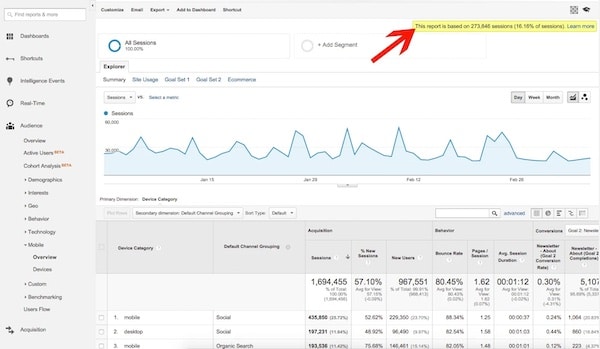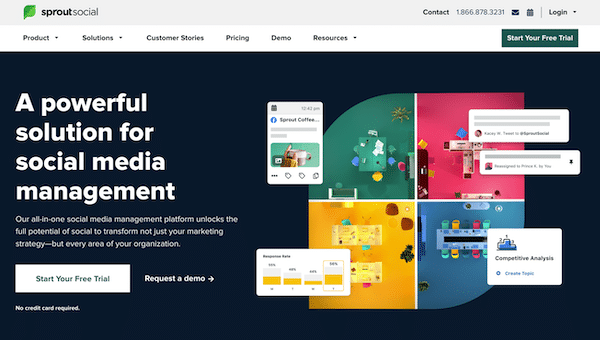Marketing for artists is one of the most important aspects of managing your art business, whether you are a well-established gallery or a solopreneur trying to make money selling your artwork as a side hustle. There are tons of articles and resources online you use to market yourself or your art but how do you know that the art marketing plan you’re implementing is both measurable and effective?
Historically, the arts have depended mostly on legacy and word of mouth,” says Lainya Magaña, the founder of A&O, a boutique integrated marketing, and public relations agency that offers services to businesses in the arts and culture industries. “We can see now that the internet and social media have changed how the industry works.”
That doesn’t mean we want to discount the traditional approaches. When you get your name into the press or through other public relations strategies, people will talk and that helps generate sales. Galleries are generally good at this, but they also have resources and the money to pay people to get their name out there.
Most artists today don’t have gallery representation or the resources of a gallery, so they need to find other marketing tactics to get noticed. Fortunately, when it comes to implementing marketing for artists, the internet has leveled the playing field considerably with many online marketplaces and personal stores, as well as easy access to potential customers through social media.
However, all the potential opportunities to promote themselves can be overwhelming so it’s important to create a comprehensive marketing plan that focuses on a few tactics that can be handled effectively.
Public Relations and Marketing for Artists
Press and media coverage, while traditional (“old school”) approaches, are still a powerful way to keep an artist’s or institution’s name on the public’s mind. However, press coverage can only take a creative so far. Magaña stresses the importance of understanding the limitations of both marketing and PR and learning how to leverage each.
“If you get a write-up in the New York Times or Art Forum, you sort of assume that everyone is going to read that article. But an article doesn’t give you any hard data,” explains Magaña. “The end goal, in essence, is usually profitability. Public relations alone can’t bring you profitability. There is no direct ROI relationship between press coverage and a sale that can be tracked. With an art marketing plan, you can track numbers and data.”
Besides traditional press coverage, you should consider online events, active social media participation among various platforms, content creation such as developing a blog, or even placing ads or boosting your social media posts as part of your art marketing plan. These tactics not only provide exposure to potential buyers and collectors but also generate real data that can help you understand whether or not a particular marketing tactic worked.
“The disadvantage of depending exclusively on public relationships and not developing an art marketing plan is that PR doesn’t tell you who you are engaging,” Magaña stresses. “Sure, that New York Times article engages ‘x’ amount of readership and a New York Times audience, but it’s hard to really understand that audience.”
Understanding Your Audience
Magaña suggests that there is a wealth of information available but that targeted art marketing campaigns utilized by other industries are still outside the norm of strategies traditionally used by the average creative business, artist, or art institution.
“Marketing isn’t really an area that is understood within the arts,” she comments, “This is purely anecdotal, but I am aware of very few galleries or institutions that have marketing coordinators on their team.”

Google Analytics is an essential tool for analyzing data from your posted content.
A creative business, artist, or institution will generally have an idea of who their consumer base is and some of the media outlets they prefer to use. A traditional art marketing and PR method might focus specifically on art-centric publications and hope that the strategy engages. Quantifiable analytics help build an extra layer that allows for more meaningful content and better ad placements.
Before developing any art marketing strategy, the first step should be analyzing your demographics and tracking the behaviors and interests of both your current inbound traffic as well as the audience you would like to engage in. For example, you should have a good idea of who is regularly reading or responding to content on your blog and social media channels Magaña recommends analytic services like Google Analytics to gain powerful demographic insights. If your desired demographic isn’t the audience that you are currently engaging, analytics can give insights into where your art marketing strategy is failing and how to turn it around.
Clearer understandings of your demographics allow for more laser-focused content, creative events, targeted ad placements and social media campaigns within your art marketing strategy. The ability to narrow your focus will give you room to build a stronger narrative and more meaningful connections.
“Maybe a gallery is trying to reach an audience of collectors who buys late 20th-century abstract paintings. How do you reach that buyer?” Magaña poses. “You can create data to understand who that collector is and learn, for example, that that consumer is a 40-year-old male who likes the interior design and reads golf magazines. With that information, you can create a more focused campaign, an event at a golf club or an ad in an interior design magazine,” that directly targets your particular demographic, she says.
For example, you can post new artwork to your fans on Instagram. Using tools like Hashtag for Likes can help you find hashtags that will be most likely to have your post, story, or reel seen by people outside of your followers. You can use sites like Sprout Social to analyze the engagement for your posts. Over time you can determine the hashtags that worked best. You can also learn the type of artwork or subject matter that resonated with your audience and helped you to receive more followers or inquiries to buy your work.

Sites like Sprout Social can help you analyze the audience engagement from your social media posts.
After the views of your posts or reels have fallen off, you can boost them for only a few dollars per day to push them to a larger audience. Let’s say you posted a photographic portrait to Instagram. You can push your post into the feeds of people who have expressed interest in photographic portraits, reaching thousands that you wouldn’t have seen your work through the non-paid (organic) post. You can use the data generated from the boost even further to refine both the posts’ content and audience to get even higher engagement.
Understanding that demographics change over time is also an important component of any art marketing strategy. You should frequently monitor what your customers want and the social media sites where they are most likely to congregate. If older people like your work, then maybe Facebook is the best place to push your art. If they are corporate clients, then spend more time on LinkedIn. If they are young, then Tok Tok may be your place.
You should also understand that marketing for artists isn’t a static process but an iterative one. Every new data point you receive could require an adjustment to your marketing plan, so be prepared to evolve your strategies in order to remain relevant. Magaña chimes in: “If you are looking to appeal to a millennial demographic, you aren’t going to do a collector’s tour, you’ll throw an after-party.”
Set A Goal and Build an Art Marketing Campaign
Once you understand your current or desired demographic, the next step is establishing a specific goal—increased sales to existing clients, increased brand awareness, new partnerships, expanding sales into new demographics—and creating a set of marketing metrics and key performance indicators to measure the effectiveness of campaigns across the chosen marketing channels.
The language and tone across your art marketing materials should always be consistent across assets and mirror established language across the rest of your brand. Spend some time developing your brand and identifying color schemes, imagery, and the ‘voice’ you want to project in your content. Using collected data can help tailor this messaging to your desired demographic in order to create the narrative and connections your customers are seeking.
Creatives should consider A/B testing, a method of comparing two versions of a marketing tactic against one another to determine the best one. This is fairly easy with tools like Facebook’s Ad Manager. Let’s say you wanted to advertise your new Showroom on Artrepreneur. A Facebook/Instagram ad includes several parts, such as the main graphic or video, a headline, a description, a call to action, etc. Imagine that you have three really great headlines and don’t know which one to choose. You can add all three to the ad, and the Ad Manager AI will test to see which one generates the most interest from the target audience. Once you know which one is best, you can continue the ad, knowing that you have the most effective headline.
With A/B testing, you can analyze your art marketing plan’s performance and determine what your customer demographic does and doesn’t react to. Data gleaned from the experiment helps understand exactly what your customers react to, allowing you to continually build better tailor-made experiences for your desired demographic, improving the likelihood of reaching your particular goal.
Don’t Fear the New Frontier
Marketing is still a relatively new concept for many artists who have previously focused on creating art and not getting it out to potential buyers and collectors. The “throwing stuff against the wall to see what sticks” strategy is no longer viable nor is relying on traditional public relations-heavy strategies. A data-driven strategy does require a bit of education and practice to be effective, but if you put in the time, you will see beneficial results.
And, as in any new strategy, consistency is your strongest tool. “With time and persistence, good projects succeed,” says Magaña.
